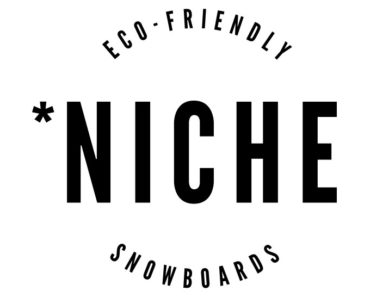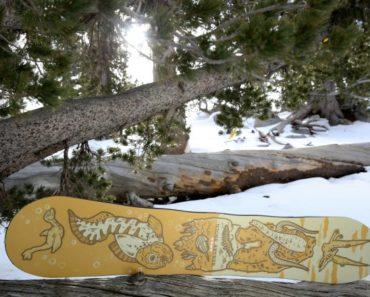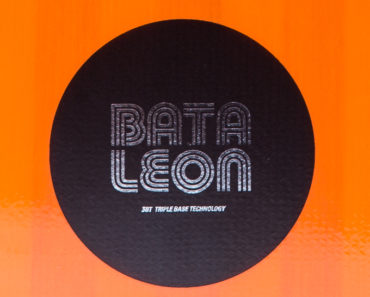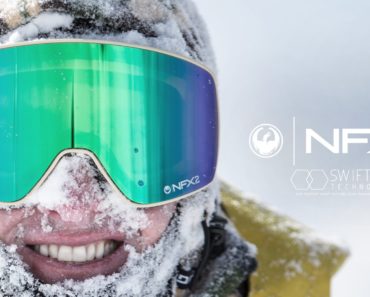1. TE ARAROA TRAIL IN NEW ZEALAND
What puts the Te Araroa on the top of the dream list for hikers is the variety. New Zealand is famous for its diverse landscapes, and the Te Araroa links close to 2,000 miles of coastal sand, alpine ridges, and jungle bushwhacks traversing national parks and farmland and winding past volcanoes. After bagging the Triple Crown of long trails in the U.S., the Te Araroa would be the obvious target for that next big thru-hike.
Distance: 1,864 miles
Why You Should Go: Maori for “the long pathway,” the Te Araroa, which is split into 160 tracks and typically takes five months to finish, cuts through the heart of New Zealand from Cape Reinga at the North Island’s tip to Bluff on the South Island’s edge. Amble along bays flanking the South Island’s Queen Charlotte Track, explore river valleys bursting with Maori culture in the North Island’s Whanganui National Park, tramp over slopes of the active Tongariro volcano, or meander through the otherworldly Takitimu Forest.
When to Go: October through April
What to Take With You: Te Araroa is known, in part, for it’s natural springs. For the true outdoorsman (or woman) this is an opportunity to lighten your load – by carrying less water – and to fully experience the environment by bringing along a water filtration device. These devices are relatively small when compared to humping around with gallons of water in camelbacks and canteens and are easy to use anywhere. The Sawyer Mini Water Filtration System is our recommendation based on ease of use and price point.
2. MONT BLANC IN THE ALPS
Overview: Circling Mont Blanc—the rooftop of Western Europe—is one of the most special hiking experiences in the world as you travel through three different countries and over several mountain passes with some of Europe’s most dramatic glaciers on display. You can soak it in and take your time over seven to 10 days or fast pack in three days. No matter how you choose to do it, it is an adventure of a lifetime!
Length: Around 100 miles
Why You Should Go to Mont Blanc: Discover the Alps and circumnavigate the Mont Blanc massif—composed of Mont Blanc (15,781 feet) and a flank of impressive peaks and glaciers—by following a beloved long-distance trail that changes constantly. At times it meanders through meadows teeming with blossoms; at others it teeters on spine-tingling sections of exposed rock.
With the highest peak in Western Europe looming overhead, you touch three countries, descend into seven different valleys, and top out on a number of high points including the Col des Fours, France, and the Fenêtre d’Arpette, Switzerland(8,478 feet). Huts perched along the way allow you to enjoy comfortable nights without having to carry a tent or food.
During the day, take a break from walking to relish local delicacies (think fondue, wine, homemade bread, and slices of local cheese) in charming villages. Many complete the trail in 10 days, but taking it slow allows for maximum enjoyment or side trips, including a climb of Mont Blanc itself.
When to Go: Summer, when huts are open and snow won’t block your progress
What to Bring: Crampons. Definitely bring crampons. Hiking Mont Blanc gives you the experience of going through a medley of types of hiking terrain. Most impressive – and most challenging I might add – is hiking on the glaciers. You don’t necessarily have to hike them, but if you don’t you will wish you had. Crampons are critical for traction. Crampons fit onto your boots and allow you to dig into the ice. They can be removed once you get through the icey portions of the hike. On a hike through Mont Blanc, you will be glad you brought them.
3. PACIFIC CREST TRAIL IN CALIFORNIA, OREGON, AND WASHINGTON
Overview of Pacific Crest Trail: Thru-hiking the Pacific Crest Trail has been a lifelong dream. The sheer beauty and variety of the great Pacific mountain ranges along with the journey of a long thru-hike traversing the U.S. north to south is the main allure. While I have many trails on my list all over the world, exploring my own country ranks highest.
Length: 2,650 miles
Why You Should Go: Pacific Crest Trail (PCT) begins with a tramp through the hot dry Mojave, ends in the lush mountains of British Columbia’s E.C. Manning Provincial Park, and tackles a series of extremes in between, including climbing 13,153-foot Forester Pass between Sequoia and Kings Canyon National Parks and exploring the Cascade volcanoes via Lassen Volcanic National Park.
Weather, logistics, and long stretches without towns make this challenging to tackle in one fell swoop, but with planning and prep it’s a doable task. Nature rewards those who persevere with a majestic voyage through seven national parks and a lifetime of national forests, state parks, and wilderness areas.
When to Go: To avoid hiking on snow-covered slopes in the Sierra and Cascades, most hikers begin on the Mexican border in April. Ideally, hikers finish by October to avoid new snow.
What to Bring: Signification portions of the Pacific Crest Trail are far away from towns or places where you can stop for the night to rest. Bringing a light-weight tent is going to be your best bet. Since we’re hiking – not driving – you want to keep the tent as light as possible. The Big Agnes Copper Spur HV UL2 is one great option. It is ultra-light weight at 2 pounds 12 ounces, can be used it 3 seasons, fits 2 people, and will fare well in a storm. That last part isn’t important until you find yourself in a complete downpour – then it’s extremely important.
4. EVEREST BASE CAMP TREK IN NEPAL
Overview of Everest Base Camp: I would recommend the trek to Everest Base Camp to anybody. The people are incredible, the scenery can’t be beat, and you get to take a look at Everest or Chomolungma, the “Goddess Mother of the World.” It’s spectacular just to see the highest point on planet Earth. In 1963, it was a 185-mile trip. These days you can start by flying into Lukla, a village at 9,000 feet with a slanted airstrip that makes for a hell of a takeoff and landing. In May, the rhododendrons are in bloom with orchids growing in them. There are guesthouses on the way up. You can get a beer. There are wastebaskets on the trail. They have done a nice job of cleaning it up. I made the trek to Everest Base Camp last year but had to turn back near the camp due to intestinal difficulties. I went 10 years ago for the 40th anniversary of the climb with Nawang Gombu Sherpa, who summited with Whittaker in 1963, and our families. That is when my son Leif decided he wanted to climb it. Who knows, I might wander up there again.
Length: About 40 miles
Why You Should Go: Though increasingly popular, this is still a remarkable bucket list trip that will move your heart and touch your soul. As you pass through the heart of the Khumbu region, traveling in the shadow of jagged, snowcapped peaks—many of the highest on Earth—all thoughts of the outside world disappear.
Immerse yourself in local culture, experience the village of Namche Bazaar, and visit the famed Buddhist monastery of Pangboche before reaching base camp (17,650 feet), where Everest towers over 11,000 feet above. A day hike to Kala Pattar (18,100 feet) offers an unobstructed look at the fabled Khumbu Ice Fall and Everest’s summit.
Though many return the way they came, making a loop by heading up and over Cho la Pass reveals the breathtaking and less crowded Gokyo Valley.
When to Go: March to May (before the monsoons move in) and September to November (after monsoon season)
What to Bring: Bring a sherpa guide. That’s your number one thing. Beyond that, don’t skimp on the warming layers. While it may seem over the top, I would invest in a parka that is rated for extreme cold. When the weather turns bad on Mount Everest, the last place you want to be is in the middle of it with insufficient outerwear. The Canada Goose Resolute Parka is a good choice. It’s pricey. This parka is expensive with a retail price tag of $1,050, but is worth every penny. There are ample alternatives, just make sure that you have outer layers that will stand up to the challenge.
5. OVERLAND TRACK IN TASMANIA, AUSTRALIA
Overview of Overland Track: The Overland Track in Tasmania, Australia, is a 40- to 50-mile-long trail (depending on where you finish) that goes through some of the wildest and most beautiful natural terrain on the planet (or so I hear). The trail is part of the Tasmanian Wilderness World Heritage Area. Plus, it’s in Tasmania! I’ve always wanted to go there.
Length: 40 miles (50 miles with the hike around Lake St. Clair)
Why You Should Go: While exploring the World Heritage-listed Cradle Mountain-Lake St. Clair National Park, you’ll experience solitude, untouched terrain, and an array of landscapes including highland mountains, rain forest, alpine lakes, and eucalyptus groves. Plus, because the wombat, platypus, and Tasmanian devil, the largest carnivorous marsupial on the planet, call Australia’s southern island state home, this area is a biodiversity hotspot offering countless opportunities for watching wildlife.
Many hikers take six days to savor the trail, but itineraries vary since the presence of huts means you can go light; plus, side-trip options abound. Two favorite add-ons: scrambling up Tasmania’s highest peak, 5,305-foot Mount Ossa, and hiking around Lake St. Clair—Australia’s deepest lake—to end the hike instead of riding a ferry across to the finish.
When to Go: Tasmania Parks and Wildlife requires hikers to make reservations and travel north to south during the prime season of October 1 and May 31. Winter weather can be rough, but the trail is open.
What to Bring: Bring a GoPro for this hike. You will not regret it. The length of this hike and the availability of local lodging makes this hike ideal for traveling light and taking pit stops to explore. The main attraction here is the wildlife. It’s not every day you get to see a Tasmanian devil in person; unless of course you are from Tasmania or work at a zoo (the San Diego Zoo has a pretty good tazmanian devil area by the way). You will want to capture your experience on camera. A GoPro Hero 5 is going to allow you to do that without using your hands to hold the camera so you will still be able to enjoy the moment.
See our Reviews section for other gear that might come in handy on your next hike. We find and review the best hiking gear, backpacks, tents, sleeping systems, and outdoors gear.






